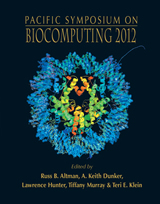Quasi-Anharmonic Analysis Reveals Intermediate States in the Nuclear Co-Activator Receptor Binding Domain Ensemble
Virginia M. Burger1,4, Arvind Ramanathan2, Andrej J. Savol1,4, Christopher B. Stanley3, Pratul K. Agarwal2, and Chakra S. Chennubhotla4
1Joint Carnegie Mellon University-University of Pittsburgh Ph.D. Program in Computational Biology;
2Computational Biology Institute and Computer Science and Mathematics Division;
3Neutron Scattering Science, Division, Oak Ridge National Laboratory, Oak Ridge, Tennessee 37831, USA;
4Department of Computational and Systems Biology, University of Pittsburgh, Pennsylvania 15260, USA
Email: chakracs@pitt.edu
Pacific Symposium on Biocomputing 17:70-81(2012)

Abstract
The molten globule nuclear receptor co-activator binding domain (NCBD) of CREB binding protein (CBP) selectively recruits transcription co-activators (TCAs) during the formation of the transcription preinitiation complex. NCBD:TCA interactions have been implicated in several cancers, however, the mechanisms of NCBD:TCA recognition remain uncharacterized. NCBD:TCA intermolecular recognition has challenged traditional investigation as both NCBD and several of its corresponding TCAs are intrinsically disordered. Using 40#s of explicit solvent molecular dynamics simulations, we relate the conformational diversity of ligand-free NCBD to its bound configurations. We introduce two novel techniques to quantify the conformational heterogeneity of ligand-free NCBD, dihedral quasi-anharmonic analysis (dQAA) and hierarchical graph-based diffusive clustering. With this integrated approach we find that three of four ligand-bound states are natively accessible to the ligand-free NCBD simulations with root-mean squared deviation (RMSD) less than 2A° . These conformations are accessible via diverse pathways while a rate-limiting barrier must be crossed in order to access the fourth bound state.
[Full-Text PDF] [PSB Home Page]